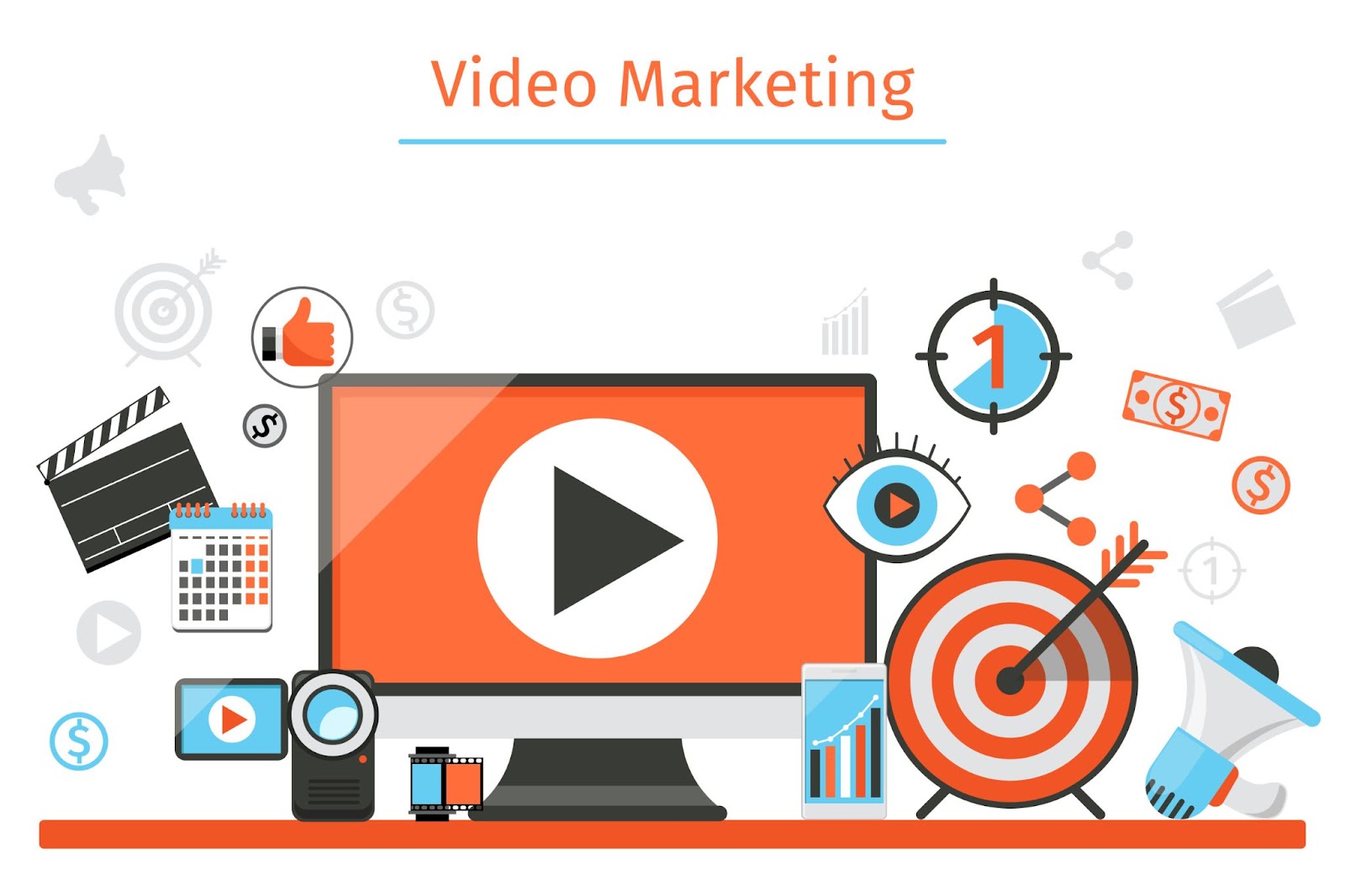Video marketing strategy is becoming more and more important for online marketers. However, many businesses are still hesitant when it comes to diving into this form of marketing.
Let’s dive into some video marketing best practices.
Remember that videos have occupied most internet content these days and are predicted to take over 82% of internet traffic in 2022.
This means that the majority of internet users love watching videos compared to other forms of marketing content.
It’s easy to see why video marketing is so powerful. Unlike traditional content strategies, such as blog posts and articles, videos are the greatest content that engages people.
Videos provide an easy and quick explanation that written content doesn’t. That’s why more people enjoy indulging in some information if it’s presented in the form of a video.
As we cover video marketing best practices, you’ll find an outline of different types of video, a few examples of these in action, as well as a simple guide that can help you to get started making videos of your own:


Source: Freepik.com
5 Different Types of Video Marketing Best Practices in Every Business
As mentioned above, a video marketing strategy has various types of content with different goals. Remember that not every marketing video is promotional, even though the main purpose is to help drive sales for your brand.
There’s a wide range of diverse marketing videos that you can create and put to use! With them, it won’t be long before you see why video marketing is so powerful.
1. Explainer Videos
This video format aims to educate and inform your audience about products, services, or brands in a very engaging way. This is great for educating the customers about your product or service in a more detailed way than just simply describing it or writing blog posts about it.

You can show people how to use the product through videos properly, so they won’t doubt before buying one for themselves.
Explainer videos are fun and informative. Incorporating this marketing video will keep the tone of your company’s personality as well as maintain corporate branding.
If that sounds good, check out The Complete Video Marketing Best Practices Guide, here.
Here, you can also access The Video Marketing Checklist, designed to help you get started and ensure you don’t miss a thing when creating your own content.
Below, you can also see an example from Commusoft, incorporating graphics, music, and more!
2. Commercial Videos
This type of video is designed to create brand awareness and stimulate inbound traffic toward your website.
To do that, this type of video uses promotional messages with call-to-action statements such as “Click here to download” or “visit our website for more information.”
It’s also considered the most popular video marketing among companies because it can be easily distributed through YouTube and social media platforms like Facebook and Twitter.
But keep in mind not to only produce promotional videos since people will eventually get tired of them if you constantly show ads on these platforms every day.
3. Testimonial Videos
Customer testimonials are important in persuading potential customers to buy the company’s product. It has more than just words. It has an honest opinion about how a genuine user feels about the product or service.
Although it doesn’t have to be done with a high-quality camera, testimonial videos are most effective when using HD video production techniques.
This is because testimonial videos should look not only good but also sound great.
Take a look at Hattie Hasan, Head of Stopcocks Women Plumbers and the Register of Tradeswomen, and hear her thoughts on Commusoft!
4. How-to Videos
An essential part of getting started with video marketing is creating tutorials about products or services on how to use them effectively.
For instance, instead of writing instructions for using their products in articles, companies can add this information to video tutorials. These help people understand an otherwise complex process of using a product better.
Video marketing works well for how-to videos because they show people simple and effective ways to do things, and more importantly, you’ll keep their attention while doing so. It’s also one of the best ways to get ideas about what to include in your next video.
5. Company Culture Videos
This one is a bit different from the rest of the list. In this type of video, you highlight what your company is like, from day-to-day life to work culture and everything else in between.
These make a great employee onboarding session and help people learn more about your brand and how they can be a part of it if they want to join your team.
Company culture videos may take some time for you to get going with, but once you have many videos covering these topics, getting new people on board will become easier.
How to Get Started with Video Marketing
We took some of Breadnbeyond’s advice and made our own video, too. Take a look!
Or if you prefer to read, scroll on down, too:
1. Understand your goals when creating marketing videos
Before you even pick up a camera or open your editing software, it’s important to have a firm understanding of the goals you want to achieve once your content goes live.
These can include driving sales, increasing brand awareness, showcasing products and services, promoting events, getting people to sign up for newsletters, and more.
Figuring out what you’re going for will help you determine the kinds of videos that will work best for your business.
2. Know your audience well

It’s equally important to understand who you’re creating videos for.
Make a list of the types of people interested in your product or service and why they would be. This is especially helpful when brainstorming ideas about what kinds of videos you should create.
When you understand your target market, it’s easier to make video content that they can relate to. Customer’s connection with your brand through marketing content can help you engage and interact with them more, eventually increasing your sales revenue.
3. Test out your video marketing
Testing out content ideas with small tests can help you determine which medium works best and gives you insight into what audiences like (or don’t like). You may have a few different ideas about the kinds of video marketing that work best for your company. The only way to truly know which format is most effective is by testing them all out.

For example, if Facebook video doesn’t work, maybe YouTube will. Don’t give up on one just because it didn’t bring in numbers right away—test your way into it. See how each platform responds to different types of video such as lifestyle, interviews, animation, etc.
Once you’ve tested out different types of video content and figured out which one resonates with your audience the most, it’s time to focus on creating more videos around that theme for greater exposure.
4. Great content is important in video marketing
When it comes to effective video marketing, content is everything. Even if you have all the “bells and whistles” on your videos, such as HD quality shots, if the content itself isn’t engaging enough, people won’t watch them or share them.
So before you begin your new campaign, spend time creating great content that shows off your company as well as what you have to offer. Find the right message that resonates with your audience, and then create a video that reflects that message.
In addition to great content, consider timing—how often should you release new videos?
For some companies, it’s a good idea to put out a new video every week, while others may opt to do one out of every month or even less frequently if their company doesn’t require putting out regular updates.
You need to use a timer app or social media scheduling software to keep up and stay on track with your update
5. Keep your videos short and to the point

Videos that exceed five minutes of length will not get nearly as many views. It’s even harder when it comes to promotional videos; the shorter, the better.
People lose interest quickly if they’re forced to watch a long video while browsing their favourite websites.
At least keep your intro short, mention what you do in one sentence at most, so viewers know where the focus of the video is going. Then go straight into talking about why they should subscribe or purchase from you since this is really where the most business is.
6. Use social channels to distribute your content
Social media has become a free marketing channel that a lot of businesses ignore. Use your social channels to share snippets from your videos and even the entire video if it’s around three minutes long.
Check out the most popular social platforms today whose audience is likely interested in what you do. You can then post the video in the preferred sites where your offers are aligned with the audience’s needs.
Go to the next level by persuading your viewers to share your videos or if they can promote your product or service on their social handles. You will have to offer something in return, such as giving a giveaway or free product samples.
Creating a Short Marketing Video
Making an attractive visual is the first step to making good content, like an explainer video.
An appealing image will attract more attention than just text alone. Explain in a new creative way why they should buy from you by telling them their story.
Showcase how your product, people, and your service can help them solve their problems with creative storytelling of benefits, all of which are centred on solving their pain points.
It never hurts to put your people front-and-centre as well. A human face will create a great first impression and help connect with your audience:
Take a look at Rhys’ video, highlighting 3 top tips for invoicing with software, to see an example of what we mean! And don’t forget to make use of breadnbeyond’s Video Marketing Checklist, too!
Video Marketing Best Practices and Other Updates!
Above, it’s plain to see why video marketing is so powerful; it’s a fantastic channel for communicating with your customers. The best way to make it work for you is by following a proven framework and sticking to it.
Use these video marketing best practices as a step-by-step guide that will lead you to success with video marketing, and don’t forget the importance of executing every step as flawlessly as possible.












